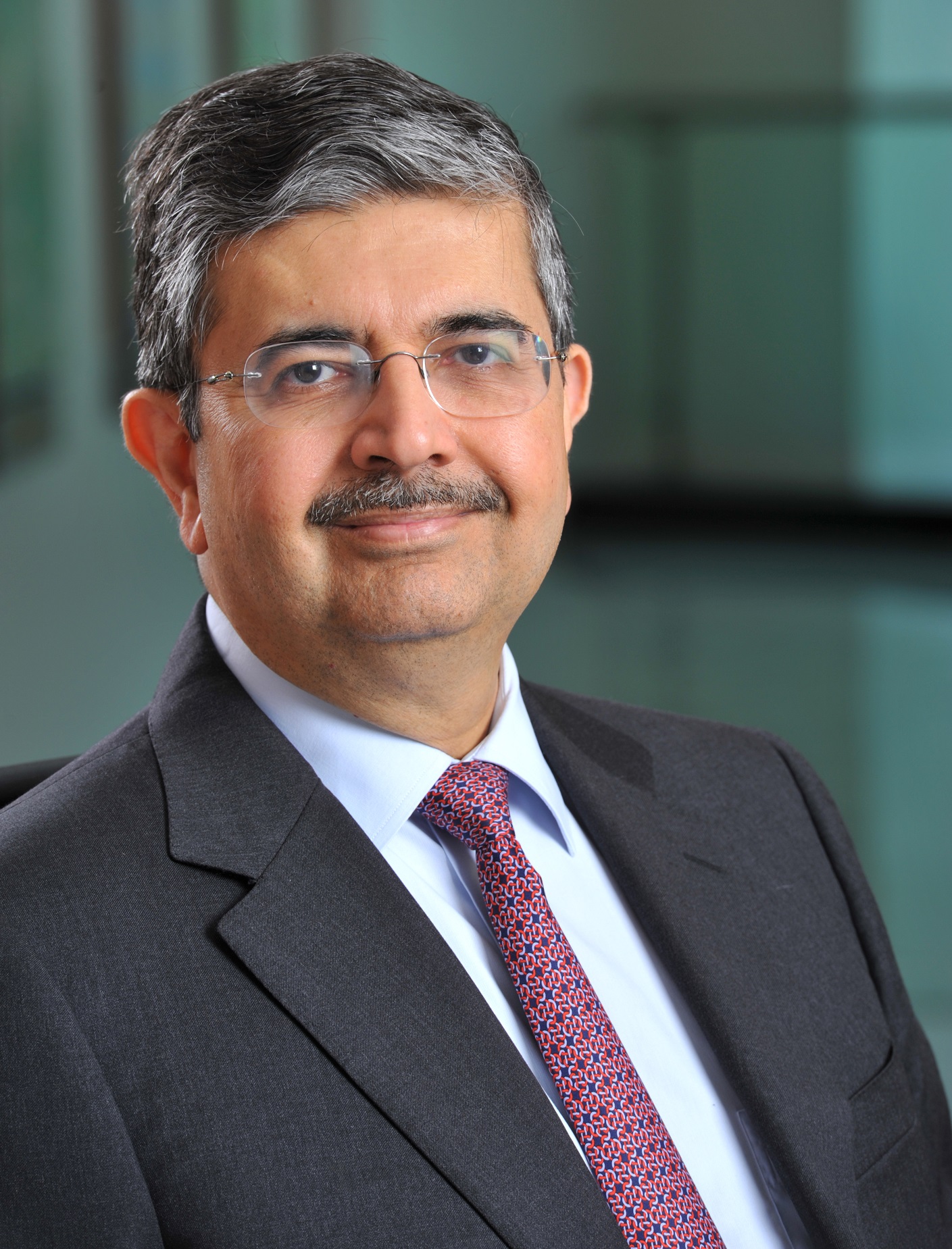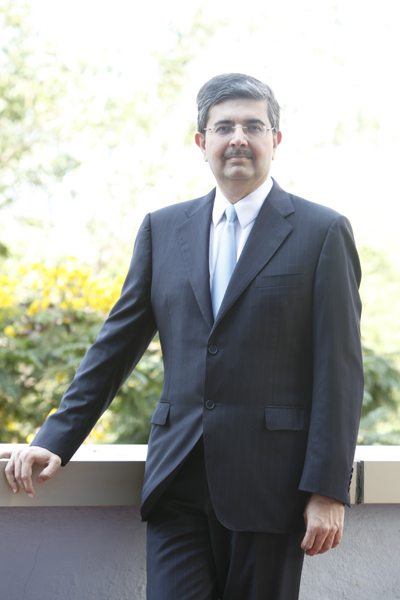Billionaire banker Uday Kotak has always been known to be a cautious risk-taker. So, will Kotak Mahindra Bank acquire IndusInd Bank in an all-stock deal? Though he does not entirely clear the air on whether the deal is in the offing, he talks to analysts about the future-readiness of the bank to grow its loan share, its strong deposit franchise, bet on the digital medium to expand footprint, and the provisioning made for potential non-performing assets (NPAs) due to Covid. Indianbankingnews.com presents the interaction in interview format and edits it for its readers.
I want to say very clearly and categorically that as a policy we do not comment on rumours and speculation (about Kotak Mahindra Bank acquiring IndusInd in an all-stock deal). And if we had anything to report, we would report it as required under the listing guidelines. The fact that we have not reported it is an answer in itself. That should bring to rest our answer on this speculative news that has been going around. Regarding strategy, there are lots of ways of playing it. If I share it all, what's the fun?
Growth has to be a part of a deeper strategy and a much superior focus on execution. Our approach to growth is through customer acquisition and customer engagement. We will certainly be more aggressive on growth, both on the customer acquisition front and on deepening the customer relationship.
Other institutions may be better and superior, but we will work on a strategy that suits our conviction. If it gives us conviction, we will do it. As I said right at the beginning, growth and sustainability are the crucial aspects of building a business. Credit risk is one of the means to achieve this objective. But there are various levers available for financial institutions to use and maintain a sustainable earnings growth. One of these is credit growth, but that's not the only one. We will focus on growth on strategic acquisitions and in general on the margins, we will work on terms of risk that fits in with ours.
You will see the plan play out over the next few years. Just give us the chance to come back every quarter and we will be very strategic, including bold and long term. On savings deposits, for example, we have spent hundreds and thousands of crores of rupees between 2011 and 2020 to build a deposit franchise. We are not scared of spending money. We spend money in a strategic manner. Look at the amount of money we have spent for digital account opening on the liability side.
There are two areas where you spend money. One is to build the franchise and the second is to take a cost on the risk. We are far more comfortable in building the franchise and spend whatever money it takes on the asset side to go forward. The trouble with risk is that the downside is unlimited. On the franchise approach, there is a defined amount of money we will need. Our bias will always be towards building the franchise and generally being more conservative on the risk side.
We are at 1,600 branches, and I am quite clear that we don't need 10,000 branches to acquire customers. The physical world game has changed. I am not averse to anything, but we are very clear that it is all about customer engagement, customer servicing and customer delivery. All the floodgates are open. We will put our spends in getting customers in different ways and that is how the future will be.

The digital banking space has given us an opportunity to expand our footprint significantly without having to expand our branch network at the same speed. Our approach, whether it is organic or inorganic, will be customers, customers, and more customers. This can be through the asset, the liability, the fee and services gates. We can cross-sell appropriate products across the customer segments, through whichever gate or whichever channel we can get into. We have to provide outstanding service.
We need to get more customers and to sell them the appropriate range of products across assets, liabilities and services. The way customers in the new world are, they are digital, physical, or somebody else's customers which we can get at some point of time. So all the three ways are the means to get customers. I don't want to confuse between which route we go. But one thing is clear that if we have to build a future-ready bank, there is a huge opportunity that India has. We are currently at 2-2.5% of the total banking sector market share.
We made an important strategic drive in 2011, which was to build a long and stable liability franchise. If you look at our low cost liability franchise in a period of nine years, we have journeyed effectively. We have a CASA (current and savings account) ratio of over 57% and close to 65% of our deposit base is in the low-cost and sustainable category. We made a dramatic progress also on the granularity of our liability franchise, and now we feel we are ready in terms of a strategic move to a different way of thought.
Historically, our customer acquisition and customer ownership engine started with the liability franchise and getting the customer as a depositor. Then we worked across a range of products on both fee services and the asset side. We are now clear from a strategic point of view that we will be opening up a number of gates in the weeks to come which, in addition to the liability side of customer acquisition, will start focusing on the asset side for significant increase.
We recognise the importance of customer engagement and ownership in the digital world. We will make an additional strategic shift in building the customer franchise on the asset side. We believe that a medium-term opportunity of a holistic bank focused on assets, liabilities, fees and services, and a constant engagement in the risk reward side is the way forward for building our future.
We are seeing reasonable traction in our financial services, asset management, securities management, investment banking and life insurance businesses. We do believe that Kotak Mahindra Bank is very much future-ready. In fact, the last six months have given us the ability to be future-ready.
The Kotak engine has been able to cross-sell everything on the liability side. We are now very clearly focused on opening the asset engine for a broader single banking system. The approach is to bring assets and liabilities much closer together. We are not blindly doing this because the markets want it. It has to come out of our deep conviction that this is the right way for us. We are getting a sense of how we want to position ourselves in this market over the next 2-3 years. We are getting the sense that we are going to play the game on our terms.
In many ways after 2011, we got an opportunity to play on our terms on the liability side. I think the post-Covid world is giving us that opportunity and we are very much future-ready.
You need to be a nuclear scientist to figure that out. Moratorium 1, moratorium 2, Supreme Court case and restructuring-through that maze you will have to find out how stress will work and how much the ultimate recovery will be. There are lots of stuff going on in the marketplace-loans getting to be flexible, ability to reprice, restructuring of loans. How do you decipher through that maze is a big challenge.
If you look through the entire Covid situation, rural India has done better than urban India. The worst impacted is the unsecured urban consumer. In our internal analysis based on our book, we have found that people with smaller salaries are more vulnerable than those with higher salaries. This cuts across not just small companies but also large firms. Covid is in many ways disproportionately hitting the lower end of the strata, irrespective of the size of the company. Urban stress is more in the unsecured book.

Our advances portfolio speaks about our strategy. We are more comfortable with home loans, loans against property, working capital loans, construction equipment, and agri MSME (micro, small and medium enterprises) loans. This year, we have brought down our unsecured credit card and personal loans by design. That mix has come down and that was always a conservative mix. At this point, we have taken this view and we stand by it. The time may come when we can pick and choose better quality customers as we get better growth. These six months have given us a great opportunity to prepare ourselves for the great future, on how we can get ready to focus on customer segments and also be on the attack.
The MSME and the ECLG (Emergency Credit Line Guarantee) schemes by the government have been a big support. It has not only provided a cushion for the banks to lend but also given the MSME sector new money to fight back and revive their businesses. For banks, it has improved the quality of their loan books to this sector. I feel much better about our MSME loan book.
As far as provisions for the potential stressed assets go, we have taken a very conservative approach. Our total provisioning on the credit count is 177% of net NPAs (non-performing assets). When we are looking at the percentages, we also see our balance sheet and how the bank would like to grow its secured, unsecured, rural, urban, retail and wholesale assets. In that mix, we have the conviction that we are well provided for and are well stacked up for meeting any risks on the balance sheet.
The last six months have given financial institutions a great opportunity to position themselves in a never-normal world. The crucial word around which we need to build our business model is resilience. How resilient are we for these changing times and how capable are we as an institution to be far more flexible to adjust to the changes running across the board?
